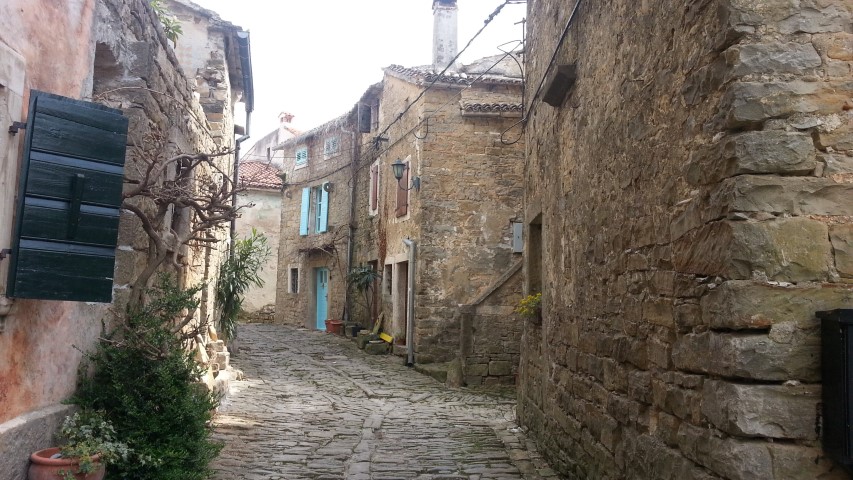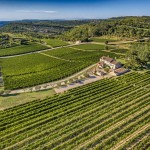

TEN THINGS YOU DID NOT KNOW ABOUT ISRAELI WINES
1. Israel is one of the oldest wine producing countries in the world.
2. The modern Israeli wine industry was founded by Baron Edmond de Rothschild, owner of Château Lafite in Bordeaux.
3. There are today more than 300 Israeli wineries.
4. Vineyards cover Israel from the mountains in the north, to the desert in the south.
5. Israel is famous for its advanced technology and its wineries are state of the art.
6. Israel’ is famous for its agriculture, which shows in its viticulture.
7. Most Israeli winemakers are young & internationally trained.
8. Israeli wines win high scores from Robert Parker, recognition from Hugh Johnson and trophies in the world’s leading wine tasting competitions.
9. Not all Israeli wines are kosher.
10 . Kosher wine is harvested, fermented, aged and bottled in the same way as a non kosher wine. The kosher designation is irrelevant to a wine's quality.
________________________________________________________________________
www.wines-israel.com
The leading web site on Israeli wines is the one created by Mr. Israel Preker. There you will find news items, articles and all the information you will need to learn more about Israeli wine and wineries.
ISRAEL: A NEW WORLD COUNTRY FROM ONE OF THE OLDEST WINE PRODUCING REGIONS ON EARTH
Fast Facts/ Israeli Wine (2016)
VINEYARDS
Israel is usually regarded as being part of the Middle East. It may be more accurately considered as being situated in the Eastern Mediterranean, a region also referred to as the Near East or ‘The Levant.’
CLIMATE: Mainly Mediterranean. Long, hot dry summers; short wet winters; snow on higher ground. Semi-arid & desert conditions, in the Negev.
SOILS: Volcanic in north; sandy red soils on coast & chalk & limestone on the hills.
HECTARES: 5,500 hectares (13,585 acres; 55,000 dunams).
HARVEST (METRIC TONS):
2014: 60,054 2013: 55,693 2012: 52,873 2011: 46,079 2010: 46,258
VINTAGE: August to end of October - (often begins late July & occasionally ends early November); Machine & hand harvested.
BEST VINTAGES:
2014; 2013; 2012; 2008; 2005; 2004; 2003; 2000; 1997; 1995; 1993; 1990;
1989; 1985; 1979; 1976
GRAPE VARIETIES
Israel’s traditional volume varieties, Carignan & Colombard, apart from some quality old vine Carignans, are usually only used in inexpensive blends. They are gradually being replaced by international varieties such as Cabernet Sauvignon, Merlot, Chardonnay & Sauvignon Blanc. Shiraz is proving both popular & suitable for Israel’s climate. Bordeaux varieties have been most successful to date, yet Mediterranean varieties may be more suitable in the longer term.
VARIETIES – METRIC TONS %:
Cabernet Sauvignon 18%; Carignan 17%; Merlot 13%; Shiraz/ Syrah 7%; Petit Verdot 5%; Colombard 4%; Muscat of Alexandria 4%; Argaman 5%; Chardonnay 3%; Petite Sirah 2%; Sauvignon Blanc 2%; Emerald Riesling 2%; Cabernet Franc 2%; Malbec 2%; Tempranillo 1%; Mourvedre 1%
LESS THAN 1%: Pinotage; Muscat Canelli; White Riesling; Pinot Noir; Semillon: Sangiovese; Tempranillo; Gewurztraminer; Barbera; Muscat Hamburg; Chenin Blanc; Zinfandel; Grenache; Nebbiolo.
WINE REGIONS
HECTARES OF VINEYARDS BY REGION (%)
GALILEE 41% - mainly Upper Galilee & Golan Heights
SAMSON 27% - vineyards in central coastal plain, Judean Lowlands, Judean Foothills
SHOMRON 17% - southern Mt. Carmel - mainly in valleys around Zichron Ya’acov
JUDEAN HILLS 10% - Jerusalem mountains, Gush Etzion & Yatir Forest - southern Judean Hills
NEGEV 5% - mainly Ramat Arad, Sde Boker & Mitzpe Ramon

OFFICIAL WINE REGIONS
Region in Hebrew / Name in English
Vineyard Areas
Galil / Galilee
Upper Galilee
Lower Galilee
Golan Heights
Shomron / Samaria
Mt. Carmel
Sharon
Shomron Hills
Shimshon / Samson
Central Coastal
Judean Lowlands
Judean Foothills
Harey Yehuda / Judean Hills
Jerusalem
Gush Etzion
Yatir Forest
Hanegev / Negev
NE Negev
Central Negev
Wine regions in bold type are registered with the TTB (USA) and the European Community.
ISRAELI MARKET
WINE MARKET IN ISRAEL: US$ 315 million annually
IMPORTS: 20%, mainly from 1. Italy; 2. Chile; 3. Argentina; 4. France; 5. Spain
CONSUMPTION: 5 liters a head
MARKET SHARE: 63% red; 16% white; 8% sparkling; 2% rose;
11% sweet (moscato style, dessert & sacramental)
EXPORT
EXPORT OF ISRAELI WINES ($ m.)
2014: $ 40 (2001: $ 8.01 m.)
MAIN IMPORTERS OF ISRAELI WINES
1. U.S.A; 2. France; 3. U.K; 4. Canada; 5. Poland, 6. Germany; 7. Holland
EXPORT SALES
55+ % of exports to North America; 35+ % to Western Europe. Remainder to more than 30 countries in 5 continents.
WINE TOURISM
There is a great deal of domestic and international wine tourism. Larger wineries are more likely to have visitors’ centers. Smaller wineries are more likely to be open on Shabbat- Saturdays.
The main wine routes are the Upper Galilee & Golan (north), Mount Carmel (northern coast) and the Judean Hills & Foothills regions (center). These days there are also wine routes in the Negev (south) and the Central Mountains too.
Autor: Israel Preker

Take a look at the wine region Istria, housing both the tradition and the love of experimentation
The strong back of mountains on the one side, sparkling blue of the sea on the other, gentle hills, lush green, cute donkey, and vineyards in between. Our late summer worldwide wine tour leads us to the Croatian Istrian Peninsula, a real holiday paradise with its lonely bays, picturesque seaport townlets, romantic mountain villages and the home of several outstanding wineries. Vineyard estate
Kabola from Momjan is one of them. The vines are cultivated with utmost care to let nature take its course in the cellar. Winemaker Marino Markezic has only to set the direction – a philosophy which is successful in producing kvevri wine since many years. We asked him how did he come to this production method, what does bio mean to the Croatian wine community and what’s the Istrian sparkling wine all about.

Mr. Markežić, please tell us a little about the history of your winery. When did you and your family start to cultivate wine in Momjan und which varieties have you specialised on?
MM: Markežić family’s wine story dates back to 1891 and the Muscat of Momjan. I am the third generation to pick up the tradition of wine production and I’m creating the Kabola brand. Although few bottles of Muscat of Momjan vintage 1891 are still to be found in our archives, we consider 1981 to be the founding year for the Kabola brand. Back then wines were simpler; the production was not as sophisticated as it is today.
Our vineyards are located on a hill called Štancija and in the vicinity of our winery in Kanedolo, Momjan. The soil is clay rich in marl which adds certain characteristics to our wines. We are located at Istrian peninsula’s north-west, at 275m altitude. The view stretches to Alps and Dolomites on one side and green landscapes and sea panorama on the other.
All this encouraged me to continue the tradition and to create a well-known Kabola brand. Kabola winery has 20ha of vineyards and is producing 11 different wine labels going from sparkling to dessert wine. Istrian Malvazija comprises 70% of total wine production in Kabola winery. Three different styles are being produced from this indigenous variety; fruity and fresh Malvazija, aged Malvazija and Malvazija from Amphorae. The basis for our sparkling wine is also Malvazija. Two more indigenous varieties are used; Muscat of Momjan and Teran. Oaked red is produced from Teran as well as rose called Rosa and one red from Amphorae which is yet to hit the market. Next to a well-known and well-accepted Muscat, there’s a dry version; Secco, and a dessert Muscat; Dolce.



- Kabola – vineyards Kabola - Marino Markesic Kabola - Aerial View
When visiting your website, the first eye catcher is, that you’re working with amphoras. How did it come to you? Is there a market for that kind of wines in Croatia or is it rather a kind of hobby?MM: Both wine and amphorae were always present in Istria. We take much pride in our amphora wines. Through an extended fermentation in amphorae and resting on skin and sediment until late spring, Malvazija acquires a whole new dimension. We are among very few winemakers in Croatia to do these prolonged macerations. We believe that Malvazija can give a serious and complex wine with great longevity and a different overall taste. When wine is being produced in amphorae it stays in contact with skin and sediment for up to 7 months. Clay vessels of various sizes are placed outside. Our first amphora wine was back in 2005. We are trying, to the best of our knowledge, to make wine as close as possible to the wines ancient Romans and Greeks used to make. When we first started this, it was a novelty in winemaking. Today it is recognized and the market seems to be interested in this type of wine.
I had strong faith in prolonged maceration even before I went into this venture. Maceration adds complexity and a different feel opposing those fresh and fruity, floral wines. They have elegance and longevity and the aftertaste is extraordinary and quite long.
Another question regarding your customers: Do you produce mainly for the Croatian market or does export play an important role for Kabola wines, too? If so, are you cultivating different wines for different markets?
MM: Kabola brand is well recognized in the domestic market and neighbouring countries. It is a common choice among demanding and informed customers in retail as well as in restaurants and hotels. Export and foreign markets positioning, on the other hand, is still something we work on very hard. We are present in 15 foreign countries with 25% of our production going to export and it’s still growing. We believe that all our wines are top quality and that our winemaking philosophy and terroir distinction can reach everyone regardless of which country of export they live in.
Your wines are eco-certified. Do you see a tendency towards ecological vinification in Croatia?
MM: Comparing Croatia and countries we export our wine too, there’s a long way ahead of us. Eco production in Croatia is still in the background. Consumers are still not buying a wine because of its eco-certificate, they choose the brand or the price. This is why we still have to educate our customers, teach them what exactly are they getting when buying eco-wine and equally important what is the benefit for the environment. This should be the task of eco-producers in Croatia.
And finally: We found a sparkling wine in your portfolio, which is rather rare in Croatia. Is there a reason for the fact, that Croatian sparkling wine is mainly found in Istria? We have heard of this old love story….but there’s probably another explanation, isn’t there?
MM: Sparkling wines are close to my heart. This is why I wanted to prove you can make decent bubbly in Istria. This idea came to me during my visit to Champagne. After going through all the details on the production of sparkling wine, I realised that I have certain micro-locations suitable for sparkling production.
One year after I tried to prove this by making first sparkling wine mainly from Istrian Malvazija variety, I wasn’t very pleased with the results, so next year I decided to add 10% of Chardonnay and 10% of Pinot.
This time, the result was good and our “natural sparkling wine Re” came into being. Few years after the first batch we received the silver Decanter for Re. We took this as a final confirmation that you can make top sparkling wine in Istria if you have the right locations.
Thanks so much for your time, Mr. Markežić. We wish you the best of luck and success and are excited about the next Kabola vintages.
Further information about the wine culture in Croatia













